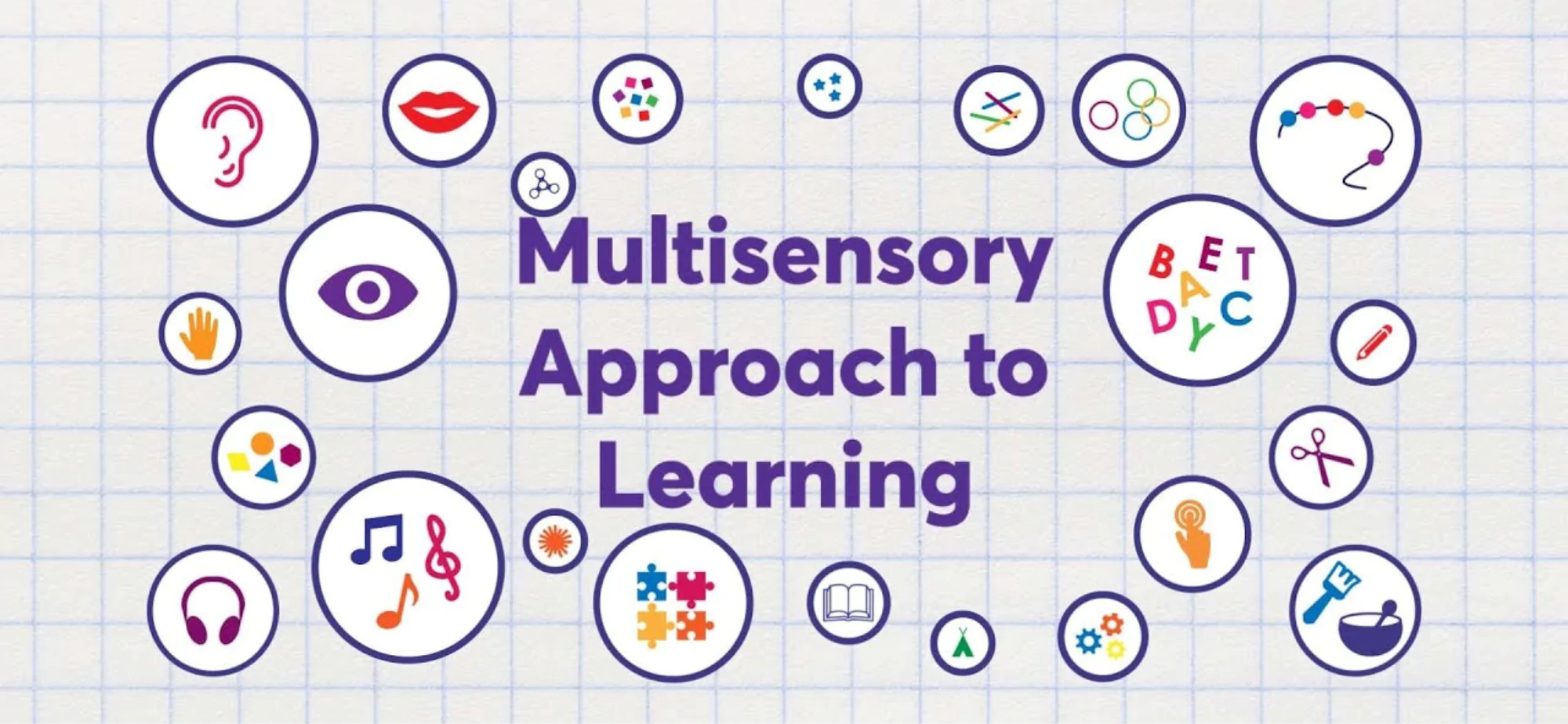Multisensory Approach of Learning in Education
Updated on: September 09, 2024

The multisensory approach to learning has gained increasing attention in recent years, especially in the context of education's shift towards inclusivity and neurodiversity. This approach, rooted in sensory integration theory, emphasizes the importance of engaging multiple senses simultaneously to enhance brain development and learning.
Key Changes in the Multisensory Approach to Education:
Traditional education often relied heavily on auditory and visual methods (lectures, reading). In contrast, the multisensory approach engages a broader range of senses (e.g., touch, movement, sound), catering to diverse learners, including those with sensory processing issues, dyslexia, and ADHD. This inclusive approach recognizes that not all students learn the same way.
Teachers are increasingly incorporating activities that stimulate multiple sensory systems simultaneously. For example:
- Using manipulatives in math to engage tactile and visual senses.
- Acting out historical events to incorporate kinesthetics learning.
- Exploring science concepts through hands-on experiments that engage touch, smell, and sight
Recognizing that students have individual sensory preferences, educators are adapting classroom environments to accommodate these needs. Some students may need movement breaks, while others may benefit from dim lighting or noise-cancelling headphones. Schools are becoming more flexible in adjusting the sensory environment to promote regulation and focus.
Current research in neuroscience supports the idea that multisensory learning strengthens neural connections. By engaging multiple senses, students process information more deeply, which enhances retention and understanding. Studies show that young children, in particular, benefit from sensory-rich environments that promote active learning.
Teachers are now being trained to co-regulate with students, helping them manage overstimulation or under stimulation. This helps in calming students during activities that may cause discomfort, such as using tactile materials they aren’t used to. Co-regulation supports a safe learning environment and helps students gradually adapt to new sensory experiences.
Creating and assessing new teaching aids, like instructional packages or e-learning tools.
Advances in technology have expanded the possibilities for multisensory learning. Interactive tools like virtual reality (VR), augmented reality (AR), and educational apps that incorporate auditory, visual, and tactile feedback are being used more frequently. These tools engage students in immersive learning experiences, making abstract concepts more concrete.
Early education has particularly embraced the multisensory approach. Preschool and kindergarten classrooms often feature activities that incorporate play, movement, and sensory exploration, laying the foundation for brain integration and learning. Sensory play, such as using sand, water, and texture materials, is recognized as crucial for developing fine motor skills, emotional regulation, and social interaction.
Practical Implications for the Classroom:
Sensory Corners: Many classrooms now have sensory corners where students can regulate their sensory needs, whether through fidget toys, calming visuals, or proprioceptive activities like yoga.
Cross-Curricular Integration: Teachers are blending subjects to create multisensory learning experiences, such as combining music with language arts or using movement to teach mathematics.
Personalized Learning: There’s an increasing focus on differentiated instruction where teachers tailor sensory inputs to individual students’ needs, especially in special education contexts.
Benefits for Students:
Improved Engagement and Memory: Multisensory learning helps sustain attention and promotes long-term retention of information by creating more robust neural connections.
Support for Neurodiverse Learners: It helps students who may struggle with traditional learning methods, offering them new ways to engage and succeed.
Enhanced Creativity and Problem Solving: By engaging multiple senses, students often develop better critical thinking and problem-solving skills.
Overall, the multisensory approach to learning aligns with current educational shifts towards fostering holistic, student-cantered environments that prioritize emotional, cognitive, and sensory development.
Sources
Blomert, L., and Froyen, D. Multi-sensory learning and learning to read. International Journal of Psychophysiology, 77(3), September 2010, pp. 195-204.[3]
Shams, L., and Seitz, A.R. Benefits of multisensory learning. Trends in Cognitive Sciences, 60, November 2008, pp. 411-17.[4]
Başar, E. The theory of the whole-brain-work. International Journal of Psychophysiology, 60, March 2006, pp. 133-38.[5]
Minnesota Literacy Council. Multisensory Activities to Teach Reading Skills. Retrieved from mnliteracy.org
Prof (Dr) Madhavi Sharma
Dean
Department of Special Education, Faculty of Education
SGT University, Gurugram

